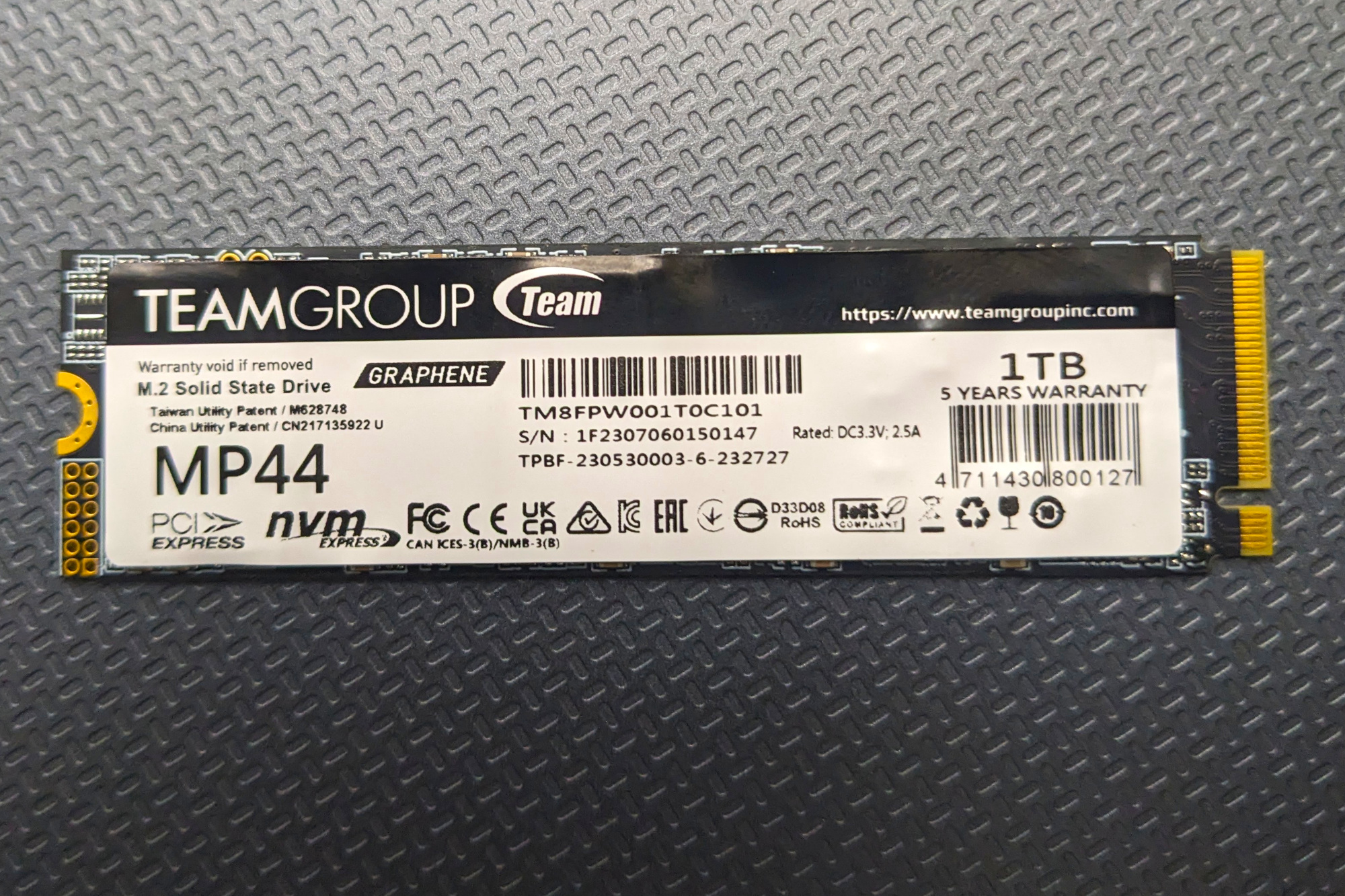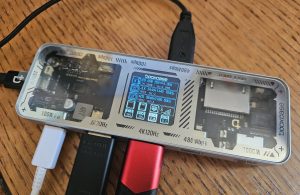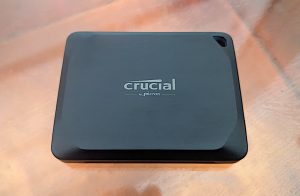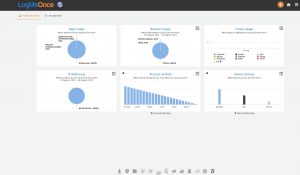

While quicker in some methods and slower in aside from its cheaper MP44L cousin, the MP44’s use of 232-layer NAND enables it to deliver up to a tremendous 8TB of capability. It also delivered a delightful surprise during our drive-nearly-full screening.
More reading: See our roundup of the very best SSDs to learn about competing products.
MP44 style and price
Aside from being a 2280 (22mm broad, 80mm long) M. 2, PCIe 4.0 SSD, the MP44 is a host memory bus design (your device’s memory is utilized for primary caching tasks) like the older MP44L. In this case, nevertheless, utilizing a brand-spanking-new Maxio MAP1602A controller and 232-layer TLC NAND.
At the time of this writing, the MP44 was offered on Amazon at $58 for 1TB (the capacity of our evaluation system), $110 for 2TB, $267 for 4TB, and $820 for 8TB. There’s also a 512GB version, though it was not listed on Amazon.
Keep in mind that the MP44 will likewise be available in a 2230 (22mm broad, 30mm long) version– the MP44S, which will fit in smaller M. 2 slots such as those found on a Steam Deck.
The primary takeaway here is that the MP44 is readily available in massive capabilities, albeit at a slight premium per terabyte for the 4TB variation, and a significant surcharge per terabyte for 8TB.
If you need 4TB or 8TB, then the MP44 is the SSD you want.
Considering that the faster-in-some-ways MP44L is readily available for $42.49 for 1TB, and $77.98 for 2TB, that drive might be the better bargain in the lower capacities (see the performance section below).
The MP44 is warrantied for five years, which is alleviated just by some rather intriguing, and general generous TBW (terabytes that might be written to the drive) rankings: 700TBW for the 512GB, 1,450 TBW for the 1TB, 2,500 TBW for the 2TB, 3,000 TBW for the 4TB, and 6,000 TBW for the 8TB.
Considering the extra money you pay for the 2 bigger capabilities, their TBW ratings are merely decent. In truth, most users never ever come close to surpassing even a low TBW score.
How does the Teamgroup MP44 perform?
Though successor drives tend to be faster than their predecessors, that was not the case in every test with the MP44. In artificial standards the MP44 appears faster in regards to consecutive throughput, however it fell well off the rate in random operations and a little off in our 48GB transfers.
As you can see below, the MP44 battered on its MP44L cousin, in addition to two likewise priced drives, the Sabrent Rocket Q4 and WD SN580, in CrystalDiskMark 8’s consecutive throughput tests. AS SSD (not shown) offered a similar viewpoint.
However, with the exception of 32-queue, single-thread read test, the MP44 was far less facile during random operations, as shown below.
In the real world, slower random ops indicates the MP44 might not run your operating system quite as quickly as some other drives. Not that it’s possible to recognize a sluggish NVMe SSD from a fast one these days with the naked eye.
The MP44 turned in very good times in our real-world 48GB transfers, even if it lost by two seconds to the older MP44L, which is a really quick drive in these tests.
Keep in mind that 1TB drives typically suffer a bit in our 450GB write (shown listed below) due to less NAND to use in secondary caching (writing as one-bit SLC, rather than QLC in this case).
The Sabrent in the charts is remarkably fast in this test, however it’s a 2TB drive that never decreased an iota from its frenetic 3GBps transfer rate.
You can tell from the following image simply where the concern in the 450GB write was– the point at which the compose slowed. The MP44L slowed to 1.6 GBps just past the middle, while the MP44 slowed quicker, about a 3rd of the method through.
As suppliers are improving HMB and secondary caching, and the purpose of our big file compose is to require the SSD to write NAND natively, we’ve begun writing even more information.
This is where the MP44 stunned us. While writing 900GB to the 1TB drive, it never ever slowed significantly as did the MP44L, not to point out every other drive we’ve “exhausted” secondary cache on. Native writing can drop to 100MBps with QLC, and we usually see 200MBps to 500MBps with TLC.
The Phison-based MP44L eventually drops to 140MBps (or less) and took 43 minutes, 24 seconds to write the 900GB. The MP44 never ever dropped listed below 800MBps in our very first run and took just 11 minutes and 44 seconds to compose the file.
This sort of sustained performance when a drive is nearly complete is extraordinary. In fact, we reconstituted our big files to make certain that de-duplication wasn’t a factor, or a minimum of not a significant one.
We’re not exactly sure how the long-lasting, high-rate continual writing was accomplished, however hats off to the Maxio controller and Micron NAND folks. If the pattern continues, it may change our suggestion to overbuy by 2X your requirements in terms of capacity, to something less drastic.
Overall, the MP44 is fast, but a mixed bag performance-wise compared to its Phison-based MP44L sibling. We were strongly impressed by the 910GB write, however that type of operation is very unusual, and the random numbers were subpar. Again, not something you’re likely to discover without a standard.
Should you buy the Teamgroup MP44?
Though deal and mid-range SSD rates have dropped through the flooring, every penny counts and you’re likely better off with the less expensive, and in most cases faster MP44L as much as 2TB of capacity. If you need 4TB or 8TB, then the MP44 is the SSD you desire. Go for the MP44 if you plan to fill the drive even more than the 50 percent that’s currently the industry suggestion.
How we test SSDs
Internal drive tests currently utilize Windows 11, 64-bit operating on an X790 (PCIe 4.0/ 5.0) motherboard/i5 -12400 CPU combination with 2 Kingston Fury 32GB DDR5 4800MHz modules (64GB of memory total). Both 20Gbps USB and Thunderbolt 4 are incorporated to the back panel and Intel CPU/GPU graphics are used. The 48GB transfer tests utilize an ImDisk RAM disk using up 58GB of the 64GB of total memory. The 450GB file is transferred from a Samsung 990 Pro 2TB which also runs the OS. The 900GB file reads off of a Crucial T700 PCIe 5.0 SSD.
Each test is performed on a freshly formatted and TRIM ‘d drive so the results are optimal. Keep in mind that in normal usage, as a drive fills, performance will decrease due to less NAND for secondary caching, as well as other elements.
Caveat: The efficiency numbers shown apply just to the drive we were shipped and to the capacity tested. SSD performance can and will differ by capacity due to more or less chips to shotgun reads/writes across and the amount of NAND readily available for secondary caching.








